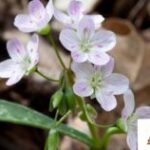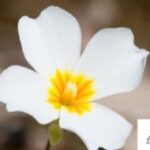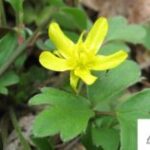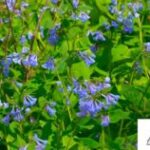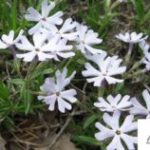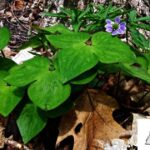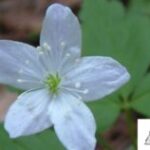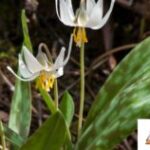From TN State Parks
With each spring, new blooms pop up to ensure us that warmer weather is near. More than just beautiful accents to our hiking trails, these wildflowers serve an essential role in the ecosystem supporting pollinators and wildlife. As you enjoy the Tennessee State Parks this spring, look closer and get to know these blooms.
1Spring Beauty
You’ll find the Spring Beauty in clusters low to the ground. Its flowers can be pink or white with dark pink stripes. Like a potato, this flower has a tuber that forms at the base of the roots. Native Americans and Colonists used to eat them, and their sweet, chestnut flavor is still enjoyed by some today.
Viewing: January – May
West Tennessee: Meeman-Shelby State Park
Middle Tennessee: Long Hunter State Park, David Crockett State Park, Port Royal State Park, Bledsoe Creek State Park, Henry Horton State Park, Booker T. Washington State Park, Old Stone Fort State Park.
East Tennessee: Cove Lake State Park
2Nashville Gladecress
There are four species of Gladecress found in Tennessee, but the Nashville Gladecress is a bit of a show-off. You’ll know you’ve spotted a Nashville Gladecress by its long notched white, purple, or yellow petals with a yellow center. It produces a sweet and robust honey scent making it popular among pollinators.
Viewing: March – May
Middle Tennessee: Long Hunter State Park, Cedars of Lebanon State Park
3Early Buttercup
The Early Buttercup gets its name from being the earliest buttercup to bloom for the season. This dainty flower has five yellow petals and a hairy stem. Emerging pollinators benefit from its bloom, but you won’t see deer, rabbits, or other mammals munching because its leaves are poisonous to them. You’ll spot it in dry areas with sparse vegetation.
Viewing: March – May
Middle Tennessee: Long Hunter State Park, South Cumberland State Park
4Virginia Bluebells
These flowers start as a cluster of pink buds that blossom into beautiful trumpet shaped flowers in shades of blue. Large grey-green oval shaped leaves line their stems that can grow up to 24 inches tall. Butterflies are the most frequent pollinator, perching with ease on the edges to enjoy the nectar.
Viewing: March – June
West Tennessee: Meeman-Shelby State Park
Middle Tennessee: Radnor Lake State Park, Edgar Evins State Park, Old Stone Fort State Park, Dunbar Cave State Park, Montgomery Bell State Park, Cedars of Lebanon State Park, Burgess Falls State Park, Standing Stone State Park
East Tennessee: Frozen Head State Park, Sycamore Shoals State Park
5Glade Phlox
The Glad Phlox is a ground cover plant, meaning it grows in thick clusters spreading out to cover as much bare earth as possible. Its full bloom makes for a beautiful sea of lush pale blue and white flowers. Its petals are uniquely notched, resembling the shape of a Y.
Viewing: March – May
Middle Tennessee: Long Hunter State Park, Radnor Lake State Park, Cedars of Lebanon State Park
6Bloodroot
The wildflower gets its name from the red juice its stem and roots produce. It has large round leaves and white flowers with golden-orange centers. At night and on especially cloudy days, these flowers close up and reopen when sunlight returns. Indians used the plant as a dye for baskets, clothing, and war paint, as well as for insect repellent.
Viewing: March – April
Middle Tennessee: Edgar Evins, Dunbar Cave State Park, South Cumberland State Park
East Tennessee: Frozen Head, Red Clay State Historic Park, Sycamore Shoals State Park, Roan Mountain State Park
7Round-lobed Hepatica
The Round-lobed Hepatica has three leaves with rounded tips, a hairy stalk, and blue flowers. This flower is one of the earliest blooming wildflowers and was once used as a medicinal herb. In the late 1800s, more than 400,000 pounds of dried Americana leaves were used in just one year to make a tonic for liver ailments.
Viewing: March
Middle Tennessee: Old Stone Fort State Park, Cummins Falls State Park
East Tennessee: Big Ridge State Park, Roan Mountain State Park
8Sharp-lobed Hepatica
Similar to the Round-lobed Hepatica, the Sharp-lobed Hepatica has three leaves and is one of the earliest blooming wildflowers. They differ in leaf shape with the Sharp-lobed Hepatica leaves being pointy. They have white or blue flowers and found in moist forest areas.
Viewing: March
Middle Tennessee: Burgess Falls State Park, Cummins Falls State Park, South Cumberland State Park
East Tennessee: Frozen Head State Park, Warriors Path State Park
9Wood Anemone / Nightcaps
Although you may think you see petals, these small and delicate-looking flowers don’t have any. What you’re seeing are petal-like sepals. Sepals are leaves that protect the developing flower bud. They can be green and leaf-like or in this case, composed of petal-like tissue. You’ll find these flowers in shades of white or pink growing in clusters low to the ground. If you see them, that’s an indication of a healthy woodland floor!
Viewing: March – June
Middle Tennessee: Bledsoe Creek State Park
East Tennessee: Roan Mountain State Park, Frozen Head State Park, Norris Dam State Park
10White Trout Lily
When you first see a While Trout Lily, you might think that it’s wilting because it’s facing downward. The flower is doing just fine; in fact, it’s protecting itself. The flower contains nectar that attracts insects that pollinate the flower, and those rob it of its nectar. By facing downward, the flower is protected from pollen washing away and prevents pesky insects from taking nectar from pollinators. While this flower is one of the first woodland flowers to bloom in the spring, it isn’t easily spotted in Tennessee.
Viewing: February – April
Middle Tennessee: Cedars of Lebanon State Park
See the entire list from TN State Parks here.





















